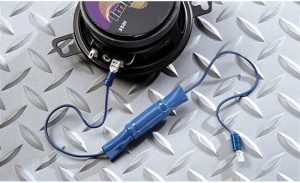As a dedicated car audio enthusiast, I’ve always been on a quest for the perfect bass experience in my vehicle. One crucial aspect that significantly contributes to achieving that audio nirvana is the proper and secure installation of a subwoofer in the trunk. In this guide, I’ll share my journey and insights on the importance of securing your subwoofer and various methods of how to secure subwoofer in trunk?
The bass produced by a subwoofer is the heartbeat of any car audio system. However, a loose or inadequately secured subwoofer can not only compromise your audio quality but also pose a risk to your safety. By securing your subwoofer properly, you enhance the overall audio experience, prevent damage to the subwoofer and other car components, and ensure a safe driving environment.
In the early days of my car audio journey, I faced challenges with a subwoofer that wasn’t securely mounted. The vibrations and movements during driving not only affected the audio quality but also led to premature wear and tear. It was then that I realized the importance of a secure setup and began exploring various methods to achieve it.
Contents
Ways to Secure Your Subwoofer in the Trunk
- Utilizing a Subwoofer Box: Subwoofer boxes are the unsung heroes of car audio, offering a critical role in providing both security and an acoustically optimized environment for your subwoofer. The selection of the right size and type of box is paramount, ensuring that it complements the specifications of your specific subwoofer. Sealed and ported box options present varying sound characteristics, allowing you to tailor your audio experience to individual preferences. The enclosed space of a subwoofer box not only keeps your equipment safe during transit but also enhances the quality of bass produced.
- Professional Installation Services: For those who seek a hassle-free and expertly executed solution, professional installation services are the go-to option. Reputable car audio professionals possess the knowledge and experience to not only select the optimum mounting locations but also to secure your subwoofer effectively. This approach not only saves you valuable time but also ensures a secure setup, eliminating any guesswork in the installation process.
- DIY Methods for Secure Mounting: If you’re a hands-on enthusiast, securing your subwoofer with DIY methods can be a fulfilling endeavor. Utilizing straps or brackets, a secure fit can be achieved by following a step-by-step guide. The satisfaction of a self-installed setup comes with the responsibility of gathering the necessary tools and materials, ensuring a successful DIY installation that caters to your specific preferences.
- Velcro and Non-Slip Matting: For the creatively inclined, velcro and non-slip matting offer a flexible and adjustable solution to subwoofer security. This method allows for easy removal when needed, offering convenience. However, it’s essential to weigh the pros and cons carefully, considering the specific requirements of your setup and personal preferences.
Additional Tips for Secure Subwoofer
- Regularly Checking and Tightening: One of the simplest yet most effective maintenance practices is to periodically check and tighten the securing mechanisms of your subwoofer. Over time, vibrations and movements during driving can cause these mechanisms to loosen. By making this a routine, you not only prevent potential issues but also contribute significantly to preserving the stability of your subwoofer setup. A quick inspection can go a long way in ensuring your bass remains powerful and distortion-free.
- Ensuring Proper Ventilation: Adequate ventilation is paramount for preventing overheating, especially during extended use. Ensure that the chosen setup allows for proper air circulation around the subwoofer. Overheating can lead to performance degradation and even damage to the subwoofer components. By maintaining optimal ventilation, you safeguard the longevity and efficiency of your subwoofer, ensuring it operates at its best for years to come.
- Monitoring for Wear and Tear: Keep a vigilant eye on both the subwoofer and the mounting system for any signs of wear and tear. Unusual sounds, vibrations, or visible damage should be addressed promptly. Timely intervention can prevent minor issues from escalating, ultimately extending the lifespan of your entire car audio setup. Regular monitoring is key to preserving the investment you’ve made in your subwoofer, ensuring a consistently high-quality audio experience every time you hit the road.
By incorporating these simple yet crucial maintenance tips into your routine, you not only protect your subwoofer investment but also guarantee a prolonged and reliable car audio setup. Your dedication to regular checks, proper ventilation, and vigilant monitoring will pay off in the form of continuous bass bliss on your every drive.
Conclusion
Securing your subwoofer in the trunk is a crucial step in achieving the ultimate car stereo satisfaction. Whether you opt for a subwoofer box, professional installation, a DIY approach, or creative solutions like velcro and non-slip matting, the key is to ensure a stable and secure setup. By following these methods and incorporating regular maintenance practices, you can enjoy a bass-rich driving experience without compromising audio quality or safety. Take action today and elevate your car audio journey to new heights!
FAQs: Your Subwoofer Security Queries Answered
Q1: Can I install a subwoofer without using a subwoofer box?
A: While it’s possible, using a subwoofer box is highly recommended. It provides a secure and acoustically optimized environment, enhancing the overall performance of your subwoofer.
Q2: How do I choose the right size for a subwoofer box?
A: Refer to your subwoofer’s specifications and choose a box that complements its requirements. The right size ensures optimal performance and prevents distortion.
Q3: Are professional installation services necessary?
A: Professional services offer expertise in choosing the best mounting locations and ensuring a secure setup. While DIY is an option, professionals can save you time and provide a reliable installation.
Q4: Can I use velcro and non-slip matting for any subwoofer?
A: Yes, velcro and non-slip matting can be creative solutions for added stability. However, they may not be suitable for all setups, so consider your specific requirements and preferences.
Q5: How often should I check and tighten securing mechanisms?
A: Regular checks every few months are recommended. Tightening mechanisms ensures a consistently secure setup and prevents any potential issues from arising.
Q6: Can I use a subwoofer in a hot environment?
A: While subwoofers can withstand heat to some extent, it’s crucial to ensure proper ventilation. Adequate airflow prevents overheating, preserving the subwoofer’s longevity.
Q7: What signs indicate wear and tear on a subwoofer setup?
A: Look out for unusual sounds, vibrations, or any visible damage to the subwoofer or mounting system. Addressing these signs promptly can prevent further issues.






